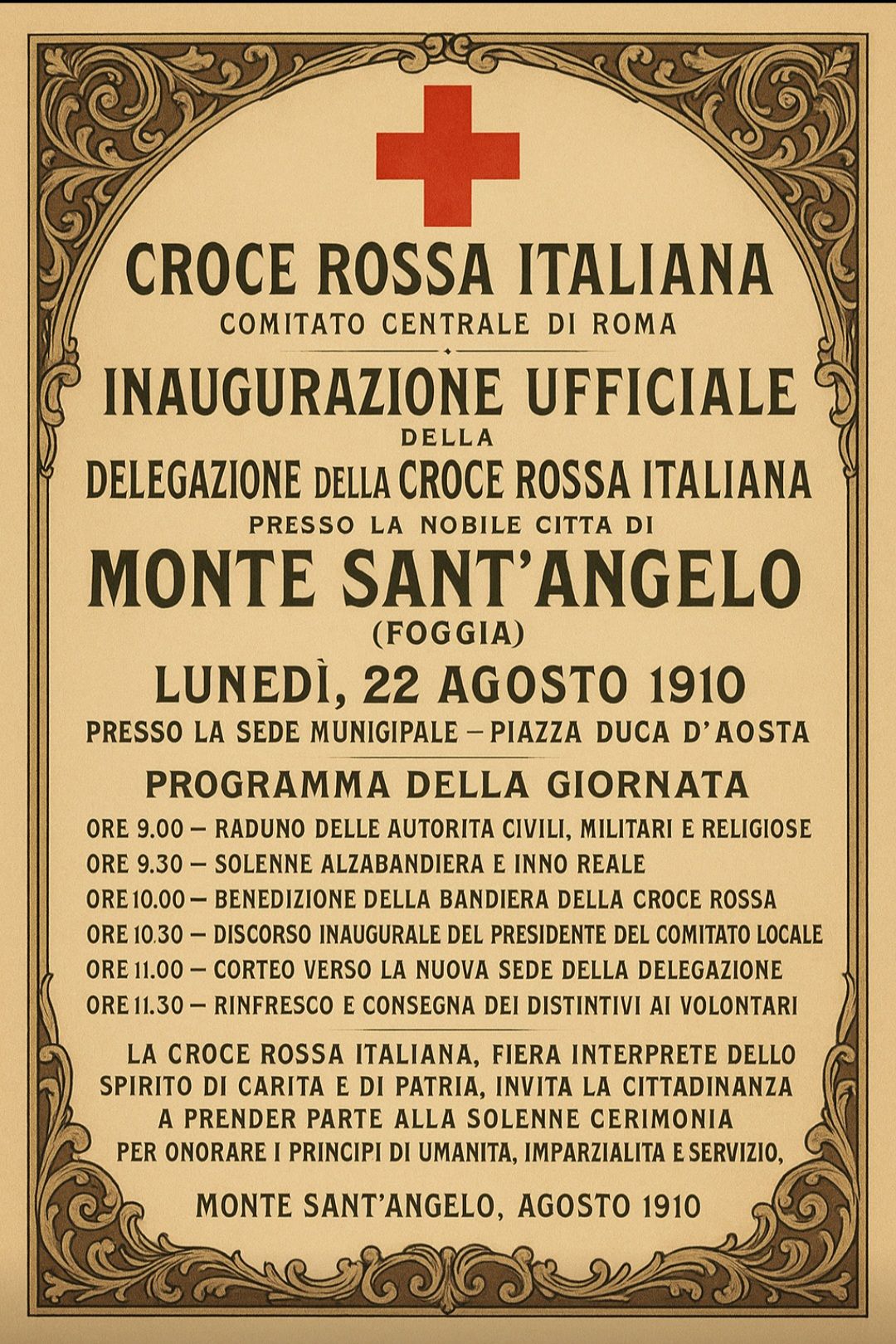The Memory of Cholera Lives in the Firefighters and Red Cross Museum
Condividi
Thanks to the Regional Commissioner of the Italian Red Cross, lawyer Raffaele Pio Di Sabato and to the hospital of Monte Sant'Angelo, who donated extraordinary finds dating back to the early 1900s at the historical museum on the Firefighters and the Italian Red Cross in Manfredonia, we were able to understand how, in addition to our city, Monte Sant'Angelo also managed to organize a Public Health Committee to stem the cholera epidemic. There are numerous documents, equipment and even a flown stretcher that have today further enriched the treasure of our museum and helped us understand how the two cities organized themselves during the days of cholera.
The cholera epidemic of 1893, after having spared Manfredonia and the whole Capitanata, returned to terrorize our South in the summer of 1910. This time the starting point was precisely our Region (Trani or Margherita di Savoia), where cholera claimed its first victims transported by "merchants, itinerants, street vendors and shopkeepers of all kinds, as well as by the acetylene gas lighting personnel and even by the fireworks personnel", who went from town to town on the occasion of the patron saint festivals that traditionally took place in the summer months. Fearing that, together with the goods, cholera vibrios from Trani and Margherita di Savoia were also being exchanged, the Mayor of Manfredonia Vincenzo Capparelli urgently called the "Local Health Corps" and with all the promptness that the case required, energetic hygienic and prophylactic measures were adopted. The city was divided into 5 sections, entrusting the service of each section to a doctor under the direction of the health officer Dr. Giuseppe Borgia who operated at the first central section. A surveillance service was established at the railway station "upon the arrival of trains" and at the port "upon the arrival of steamships and sailing ships". A wooden hut was built on the pier for disinfection practices "for maritime arrivals", while at the other end of the city some tents of the Italian Red Cross were set up for the care of the sick and rooms of an ancient church were equipped for the isolation of suspects. In support of the action of the Municipal Council "with the aim of further increasing urban cleanliness, in order to stem the spread of the disease in this municipality", on the initiative of a team of students and some willing citizens a public health committee called "Croce Verde" was created. It included 36 founding members including President Pietro Guerra. The cholera epidemic lasted more than a month and ended on November 22, the day the Lazzaretto ceased to function after 26 deaths had been counted, who were given a pious burial at the expense of the municipality of Manfredonia. This last historical cholera epidemic was a human tragedy that, in addition to causing numerous deaths, was also a terrible blow to the municipal finances.
DIVISION OF THE CITY INTO 5 SECTIONS DURING THE CHOLERA OF 1911-1912.
First section - Central area
Dr. Giuseppe Borgia Health officer, assisted by medical student Ettore Guerra.
Health officer Scarano Raffaele; officers Sant'Arcangelo Domenico, Di Lauro Giuseppe, Del Vecchio Francesco and 2 soldiers of the Croce Verde.
Second section - internal country A
Dr. Camillo Grasso, Heavy Officer Michele, no. 4 Green Cross soldiers. no. 4 Green Cross soldiers, Agent Potenza Nicola and no. 2 Green Cross soldiers.
Third section - internal town B (inhabited from via Arcivescovato to Monticchio.
Dr. Pietro Guerra, agent Castriotta Matteo and 3 soldiers of the Croce Verde.
Fourth section - Railway, Lazaretto, Surveillance station.
Dr. Castigliego Giuliano and Azzarore Raffaele, in shifts agents, Carabinieri, Guardia di Finanza and Marcolongo Gaetano and n. 7 soldiers of the Croce Verde.
Fifth section "surveillance of hotels, rented houses and of the people to be kept under observation.
Dr. Simone Luigi, agent Florio Giuseppe and 6 soldiers of the Croce Verde.
At the same time, the city of Monte Sant'Angelo also established the Delegation of the Italian Red Cross on 22 August 1910, which was a very advanced organisation for its time. Its staff included the Grand Officer Renzulli Matteo - Delegate, Piemontese Matteo - vice Delegate.
Piemontese Francesco - Secretary
Esposito Luigi - Cashier
Piemontese Giuseppe - Member
Santoro Michele - Member
De Cillis Gabriele - Member
Rinaldi Angelo - Member
D'iasio Matteo - Member
Bisceglia Bernardo - Member.



